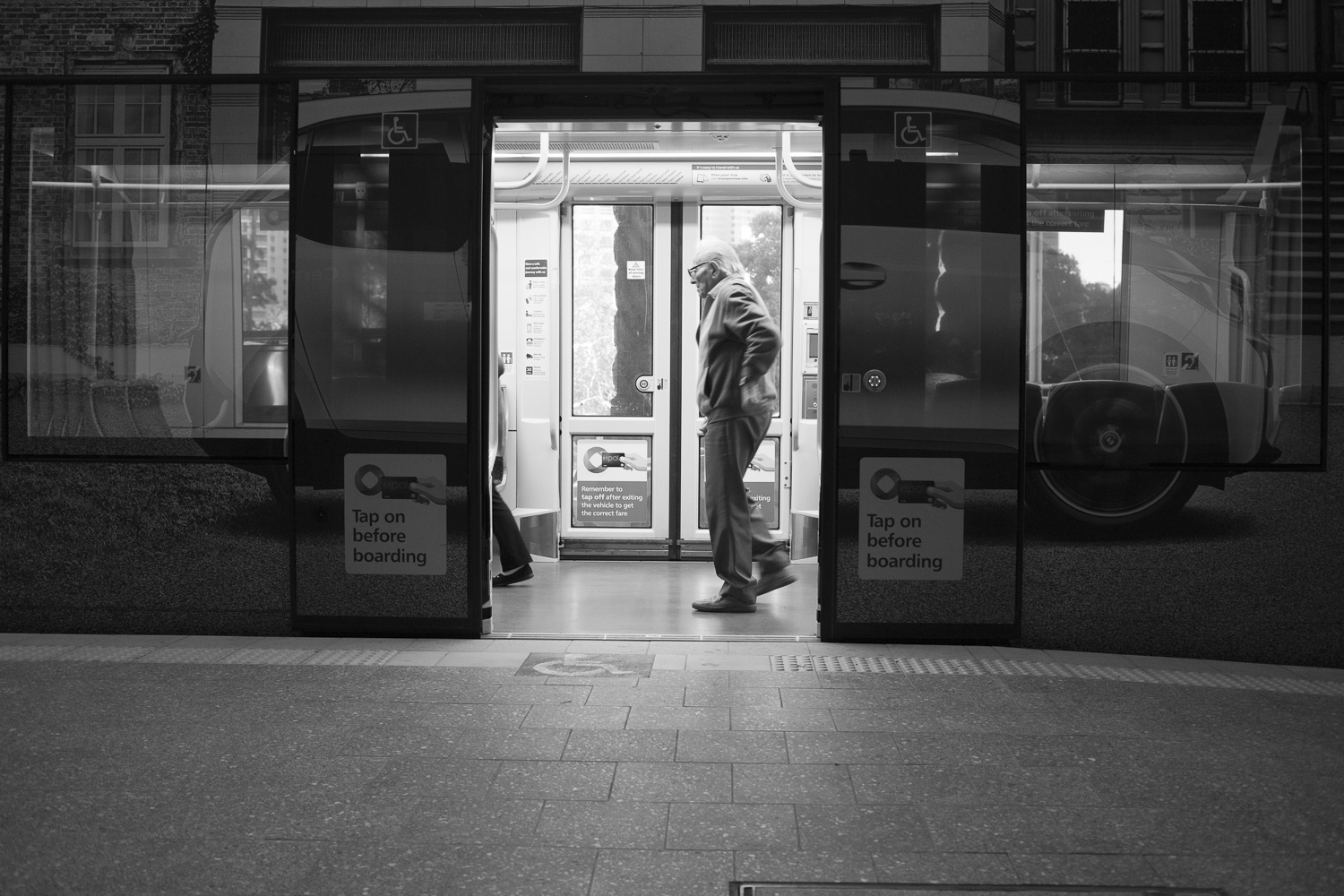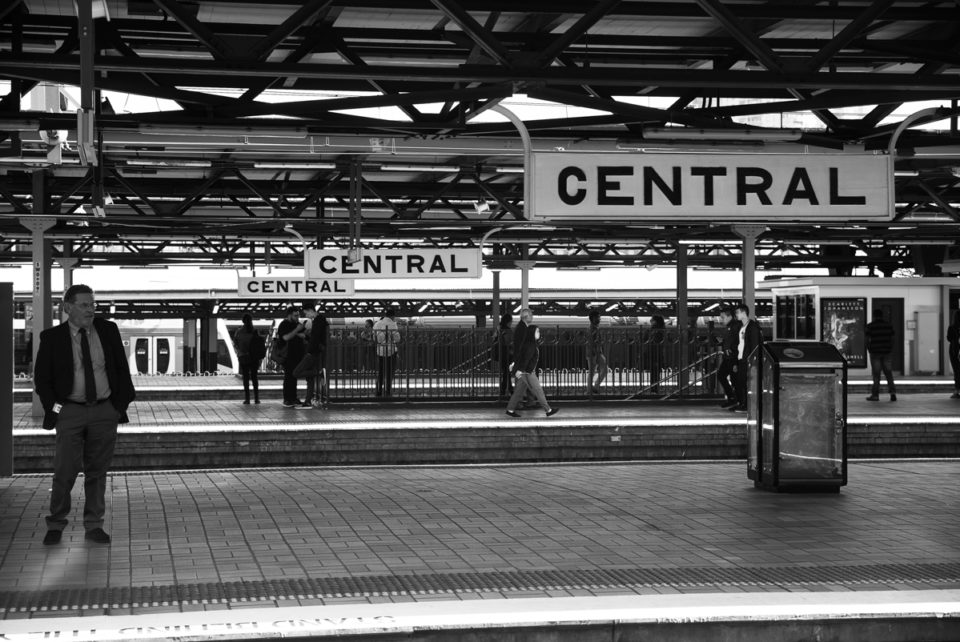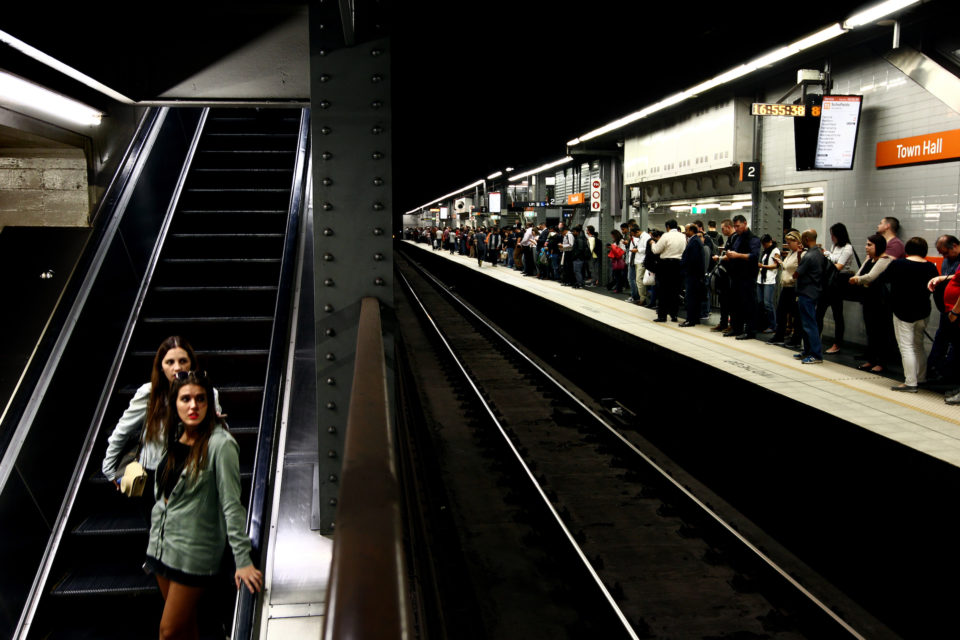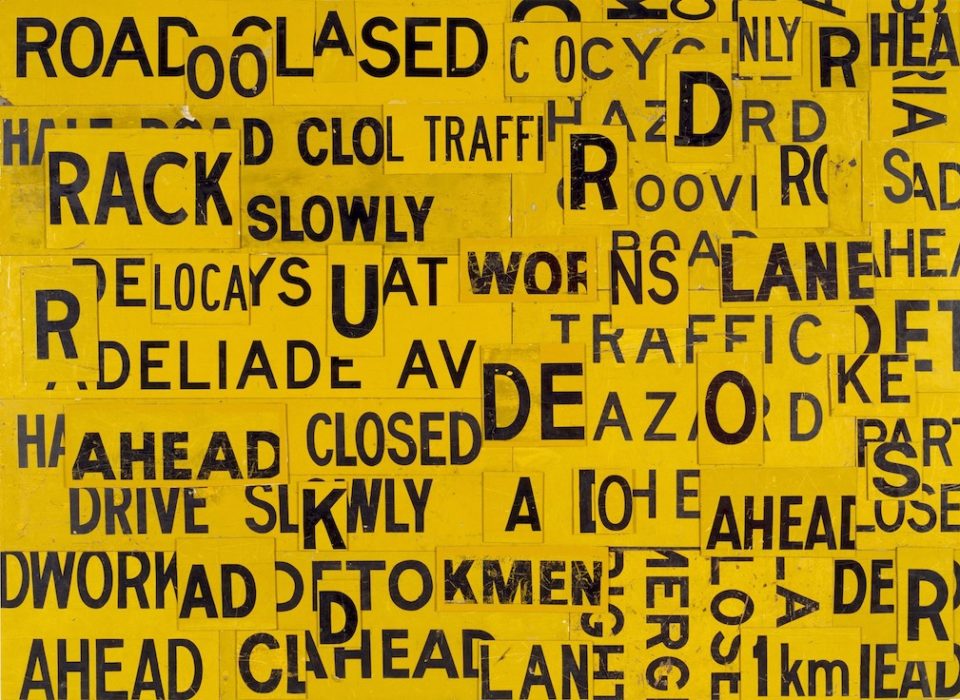The yawning gap between the train and Platform 1 at Martin Place freaks me out. It’s dark, deep and dirty. I cross it on my way to work. But, like a child jumping a narrow creek, I pay attention to what’s down below. As well as rubbish, there’s so much room for error. If you slipped or fell, would they be able to stop the peak hour train in time? What’s the emergency protocol?
These questions arise as I breathe through my nose and step down from the carriage, among the alternately distracted, impatient, phone-glued, differently-paced and variously-abled morning commuters.
An elderly woman I know has a fear of public transport. Actually, she’s my mother. Bus rides unbalance her, underground train stations disorient her. Ferries are okay – if she’s with someone with public transport skills. “And it is a skill,” she says. “Like driving.”
Someone she knows feared hand germs and didn’t hold on to the railing on the downward escalator at Kings Cross. They fell. Public transport is like that. A balancing act. Amid the rushing, important choices must be made.
All Sydney Trains escalators have an emergency stop button in the event of a customer falling. Signage has recently been refreshed to make it clear for travellers should they need to activate it. While I hold on to the escalator railing to remain steady, I always wash my hands, on arrival from A to B.
As soon as you enter Kings Cross station, warm, trapped air and junk food carbs fill your nostrils as the escalator, with its big new red emergency stop button, takes you down, to a mini-mall of sushi, donuts, fried rice, Powerball, papers and now-closed ticket counters. It’s here that I first see the poster: “Over 300 people fell between the train and the platform last year … Please mind the gap.” This doesn’t surprise me at all. The poster shows a pair of yellow shoes with eyes on their toes, stepping carefully off a train.
When I contact Transport for NSW, a spokesperson tells me the number of gap falls was actually 330. “Millions of customer journeys are made on public transport each week with the majority completed safely and without incident. Unfortunately, we still see customers slipping, tripping or falling.”
In 2016, more than 5,000 safety related incidents occurred on the NSW public transport network. More than 2,000 of these were caused by customers rushing and falling over, being distracted by their mobile phones and not looking where they were going.
No wonder Transport for NSW recently launched its safety campaign across buses, trains, light rail and ferries to encourage customers to ‘do their bit for a safer trip’. It calls on customers to take care by watching their step, looking up from their mobile phone, paying attention to their surroundings and not rushing. Hypervigilant, I know I’m not their target audience. I always mind the gap.
Suddenly this strikes me: that dark gap between the train and Platform 1 at Martin Place is a liminal space, a psychological symbol for so much more than physical safety. It’s a threshold that divides my two worlds – the private and professional, the free and the tethered. At the day’s end, my evening train on Platform 2 goes to Bondi Junction. First stop Kings Cross. Although I mind it, the gap always seems smaller when I’m on my way home. Unless it’s just my imagination.





